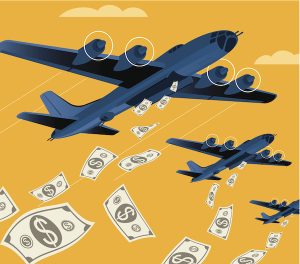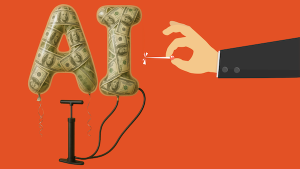Inflation persists not just because of spending or interest rates, but because underlying social conflicts over income, expectations, and power remain unresolved.
The inflation surge that followed the COVID-19 pandemic took policymakers by surprise. Central banks across advanced and emerging economies initially described the price rise as temporary, attributing it to supply chain disruptions, energy shocks, and post-lockdown demand surges. However, as inflation proved persistent, monetary authorities responded with sharp interest rate hikes to restore price stability and credibility. In theory, tighter monetary policy and the normalization of labor markets should have stabilized inflation.
Yet inflation has proven far more stubborn than anticipated.
Although macroeconomic “gaps” are closing—unemployment is falling, production is recovering, demand is flattening—inflation has often refused to retreat. Something else is at play. A closer look suggests that the forces driving inflation are not just technical or monetary. They are social. They are political. And, most importantly, they are conflictual.
In my new INET Working Paper, I explore a structural explanation for inflation persistence that is not rooted in expectations or contracts, but in the conflicting income perceptions of firms and workers. Inflation inertia is reinterpreted as the result of a dynamic, antagonistic struggle for income shares, where even a market in equilibrium can fail to restore stability.
The Missing Link: Distributional Conflict
The core idea is simple: both employees and companies strive for a certain real wage level. Employees want rising wages that reflect their growing material expectations—better consumption, more security, and a higher standard of living. Firms, for their part, strive for real profits or, to put it another way, for a cost structure that maintains their return on capital.
When these aspirations clash and when one of the two sides has enough bargaining power, price and wage adjustments become weapons in an ongoing conflict. Inflation in this sense is not caused by “overheating” or fiscal largesse, but by the inability of market forces to reconcile these incompatible goals.
This view differs markedly from standard inflation models that emphasize nominal rigidities, expectations, or monetary aggregates. Instead, inflation is seen as a social process: one that reflects the unresolved struggle over who gets what in the economy.
Aspiration Gaps and the Roots of Inertia
A central concept in the paper is the aspiration gap: the difference between the income that both groups currently receive and what they think they should receive. This concept has its roots in the work of Rowthorn (1977) and Dutt (1987) and was later developed further by other theorists who emphasized how desired wage and profit shares influence price behavior.
Firms and workers not only react to the demands of others but also pursue their own targets (or aspirations). These targets can be influenced by past income, historical contexts, cultural norms, expectations of future consumption, or simply by observing what others are getting. And crucially, they’re sticky. They won’t disappear overnight, even if economic fundamentals do.[1]
If one of the two groups has enough bargaining power, these aspirations don’t just shape expectations—they shape actual outcomes. Workers raise their wage demands to close the gap. Firms respond with higher prices to defend their profit margins. This dynamic leads to a self-reinforcing process in which both sides’ attempts to fulfill their aspirations feed into ongoing inflation.
This is the essence of inertia: inflation continues not because of new shocks, but because the imbalances of the past have created a momentum of their own that institutions and markets alone have difficulty counteracting.
Two Equilibria, One Instability
Conventional economic models tend to assume that inflation can be contained as soon as markets return to equilibrium—that is when supply meets demand and expectations are anchored. Following Olivera (1991), in my research I emphasize an important distinction: the difference between market equilibrium and social equilibrium:
- Market equilibrium happens when expected and actual demand coincides. There are no obvious surpluses or shortages.
- Social equilibrium, on the other hand, occurs when aspiration gaps are closed—when both groups are satisfied with their share of the economic pie.
The problem is that these two forms of equilibrium do not necessarily overlap.
You can have a stable labor market, yet workers may feel underpaid. You can have stable profits and yet firms strive for higher margins. If market equilibrium does not eliminate social dissatisfaction, inflationary pressures will persist.
In fact, one of the more surprising results of the model is that even when both gaps—market and social—are temporarily closed, inflation can persist. This is because aspirations are not passive: they adapt, evolve, and sometimes escalate. They are social constructs shaped by many components. In this way, inertia survives equilibrium. It becomes a kind of slow-burning fuse that reignites inflation even after the initial fire has been extinguished.
Bargaining Power and the Dynamics of Persistence
Another important innovation of the paper is the formalization of the interplay between bargaining power and inflation persistence.
When firms and workers have limited power, the system behaves more like a neoclassical adjustment: inflation declines when demand stabilizes. However, if one of the two groups has considerable power—especially asymmetric power—the dynamic changes. If workers have strong bargaining power, wage inflation may continue even after demand shocks subside, as they push to fulfill their aspirational wage gap. When firms are dominant, price inflation persists as they raise prices to defend their ideal profit margins, regardless of cost conditions or real demand.
When both groups exercise power simultaneously—pushing in opposite directions—the system oscillates. Persistent inflation causes real wages to fluctuate, often with increasing volatility. This is reminiscent of the “Simonsen curve” described in Latin American structuralist models, where indexation mechanisms and feedback loops create a sawtooth-like dynamic of real wage adjustment.[2]
What’s new in this model is that no explicit indexation is required. The same inertial effects can be generated purely through aspiration gaps, bargaining power, and conflict dynamics alone—an insight that engages in both the heterodox and structuralist traditions.
The Case for Consensus
If market mechanisms cannot close aspiration gaps, and if bargaining power fuels inflationary cycles, how can stability be restored?
The answer, I argue, lies not (necessarily) in technocratic tinkering but in social and political consensus. As I show in the paper the only stable and desirable system is one in which both workers and firms have moderate bargaining power and in which aspirations are collectively managed.
This does not mean freezing wages or profits. It means coordination—through institutions, norms, or policies—that reconcile income claims with macroeconomic goals. This could take the form of wage pacts, inflation-targeting frameworks with labor participation, or even cultural changes that dampen the escalation of aspirations.
In short, controlling inflation is not just a monetary task, it is a distributive one.
Without mechanisms to mediate conflict, inflation will survive the shocks that triggered it. It will become endemic, not because the economy is overheated, but because society is out of balance.
Conclusion: Inflation as a Mirror of Social Tensions
In today’s world, where inflation has once again become a central economic problem, it is tempting to reach for familiar tools: raise interest rates, cut spending, wait for demand to cool. However, the persistence of inflation in many contexts suggests that deeper forces are at work.
What if inflation is not just a monetary phenomenon, but a reflection of unresolved distributional tensions?
My research proposes that inflation inertia arises not from exogenous shocks or adaptive expectations but from the endogenous dynamics of social conflict. It shows that market equilibrium is not enough and that social dissatisfaction can drive inflation even in a stable economy.
To truly stabilize prices, we may need to stabilize something deeper: the struggle for income shares, aspirations, and power.
References
Bernanke, Ben, and Olivier Blanchard. (2025). “What Caused the US Pandemic-Era Inflation?” American Economic Journal: Macroeconomics, (17)3, pp. 1–35.
Dutt, Amitava K. (1987). “Alternative Closures Again: A Comment on ‘Growth, Distribution and Inflation’”. Cambridge Journal of Economics, (11)1, pp. 75–82.
Olivera, Julio H. G. (1991). “Equilibrio Social, Equilibrio de Mercado e Inflación Estructural”. Desarrollo Económico, (30)120, pp. 487–493.
Rowthorn, Robert E. (1977). “Conflict, Inflation and Money”. Cambridge Journal of Economics, (1)3, pp. 215–239.
Notes
[1] A different approach is taken by Bernanke and Blanchard (2025), who analyze post-pandemic inflation across eleven economies using a model that focuses on price shocks, a tight labor market, and inflation expectations. Their results emphasize the transitory nature of supply shocks and a limited, albeit increasing, role of wage pressures in tight labor markets. While their framework helps explain short-term inflation dynamics, my model proposes a complementary mechanism: Inflation persistence can also arise from unfulfilled aspiration gaps and distributional conflict, even in the absence of new shocks or unanchored expectations. From this perspective, social and institutional dynamics—and not just macroeconomic slack—are key to understanding why inflation persists.
[2] The “Simonsen curve” is named after Mario Henrique Simonsen, a Brazilian economist and finance minister in the 1970s, who described the cyclical dynamics of real wages with wage-price indexation in high inflation economies. This curve illustrates how inflation persistence makes real wages fluctuate due to feedback between prices and wages even in the absence of new shocks.




